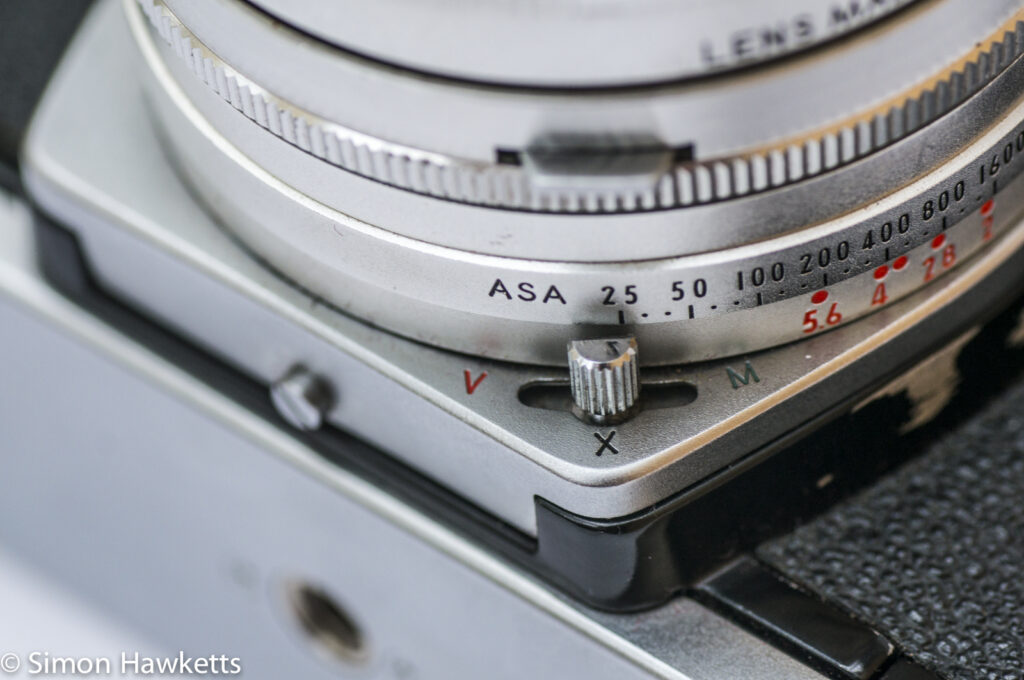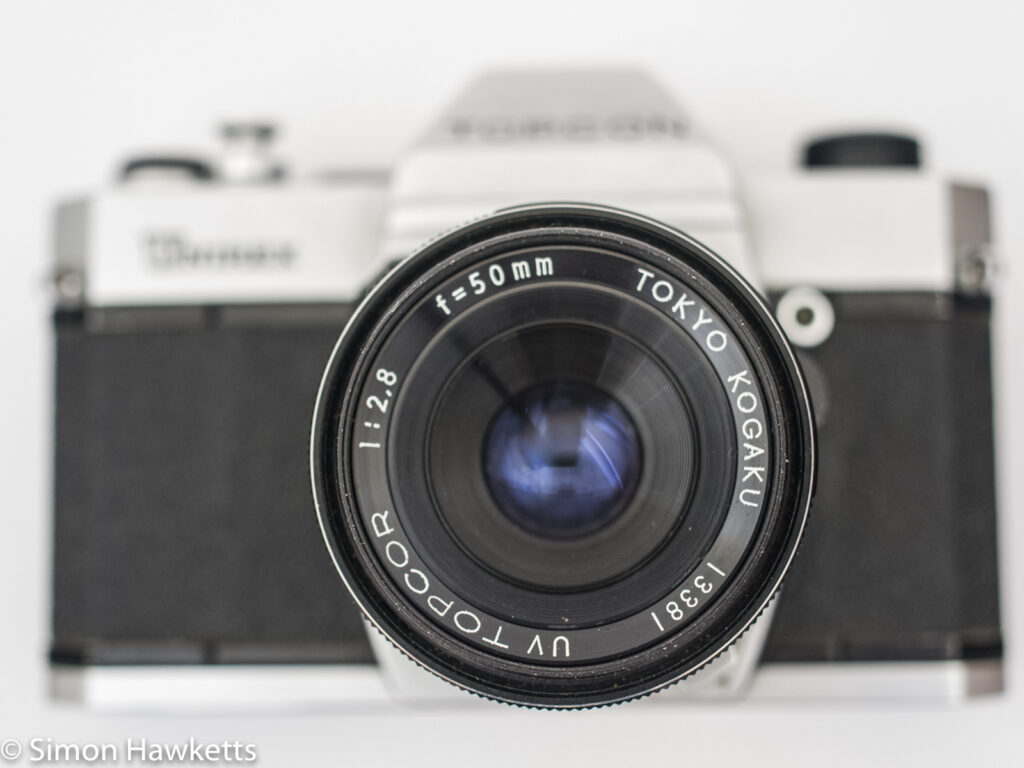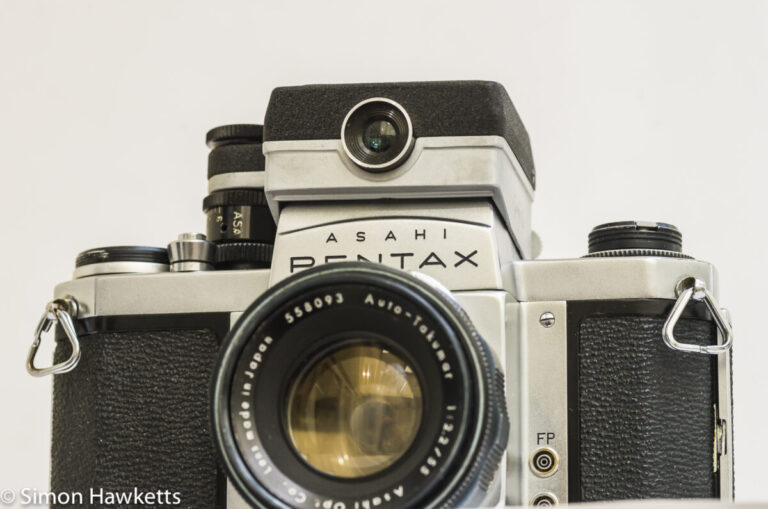Topcon Unirex 35 mm SLR camera
This post is a review of the latest vintage camera I’ve acquired for my collection, a Topcon Unirex fitted with a Topcor 50 mm f/2.0 lens which was made sometime between 1969 and 1973.
Photos of the Topcon Unirex.
This gallery contains a few photos of the Topcon Unirex camera in my collection. Other photos of the camera are used later within the text of the article.








My Topcon Unirex vintage camera
The cosmetic condition of the camera is quite good. There is a little scuffing to the paintwork in a couple of places round the lens barrel and on the backplate, but almost everywhere else is in pretty good condition.
Functionally, the viewfinder has a dark spot near the centre of the screen, coinciding with the focus assist rings, and the lens aperture was a little reluctant to close when the shutter was fired, although that seems to be getting a bit better with use. I suspect the dark spot may be related to the exposure measuring system – more later.
I must admit that I didn’t know a great deal about Topcon as a camera manufacturer before I bought this one for my collection, but it seems to be a better quality manufacturer than a lot of the more famous makers. The film advance lever has a real feel that you are connected with a piece of precision engineering rather than just pulling on a lever connected to some cogs!
In design this camera is different from any other 35 mm SLR I own because of a few interesting features. For example, the shutter is not a focal plane shutter sitting just in front of the film, but a leaf shutter sitting just behind the lens in the back of the lens mount. The shutter speed control is fitted around the back of the lens barrel behind the point where the lens mounts on the camera.
The ISO speed setting for the exposure system also sits at the same point, and this is also a bit unusual because it has different set points for different lenses – more on that later.
Topcon Unirex Description
The next few paragraphs cover some of the features of the Topcon Unirex
There looks to be quite an advanced exposure system on this camera. Not only does it offer (what is effectively) shutter priority automatic exposure and manual mode, there is a choice of two metering modes.
A switch around the film rewind crank allows the photographer to switch between Averaging mode, where two photocells are used, or Spot mode, where a photocell embedded in the mirror is used (probably the reason for the darker patch in the middle of the viewfinder).
The camera is powered by a single cell fitted in a compartment in the bottom plate. My example didn’t have a cell fitted, but when I put one in, I can see the lens being stopped down as I adjust the shutter speed, so I assume some sort of reading is taking place.
The lens aperture is controlled by the camera in auto mode, so composition and metering is all at full aperture with the lens being stopped down at the point of exposure. There doesn’t appear to be any sort of electrical connection between the lens and the camera, so I think this must be a purely mechanical arrangement.
The ISO setting is adjusted by pulling up a small lever on the speed setting button and rotating the speed dial to set the correct ISO as shown on a dial on the underside of the lens mount. The ISO scale has different setting points for the different maximum lens aperture that Topcon offered for different lenses, so once the camera was loaded with film, if the lens is changed, this setting has to be reviewed and possibly altered to maintain the light meter’s accuracy.
The lens mount is a bayonet design with a button mounted in the lens to remove it from the camera rather than a button on the camera. It looks a lot like an Exakta mount, but it isn’t exactly that because the lens won’t fit on my Exakta to NEX adapter. I assume it is some variation of that design.
The other strange thing about the lens mount is that the aperture adjustment is on the camera not the lens! This makes it odd when a lens with a different maximum aperture is fitted because the setting doesn’t match the actual aperture on the lens. I know that is the purpose of the switch which sets the aperture, but it would make reading the actual aperture used on the shot (which a lot of photographers used to do) quite complex.
The viewfinder has twin micro prism circles to assist with focusing, and a needle in the bottom left-hand corner with an aperture scale showing. This is the manual exposure system which shows the aperture to set for the shutter speed selected when out of ‘Auto’ mode.
Topcon Unirex specification
- Topcon Unirex 35 mm SLR
- Manufactured between 1969 & 1973
- Leaf shutter 1 sec to 1/500 + B
- Bayonet lens mount
- Average and Spot metering available
- Auto and Manual exposure
- 10 sec self-timer
- X and M flash sync
- ‘Cold’ accessory shoe with flash sync socket
- UV coated 50mm f/2.0 Topcor lens
- Flash sync (with electronic flash) up to 1/500 sec
- Body Serial No 68070139
- Lens Serial No 68101227
- Manual available on-line here
Discover more from Everything Vintage
Subscribe to get the latest posts sent to your email.






